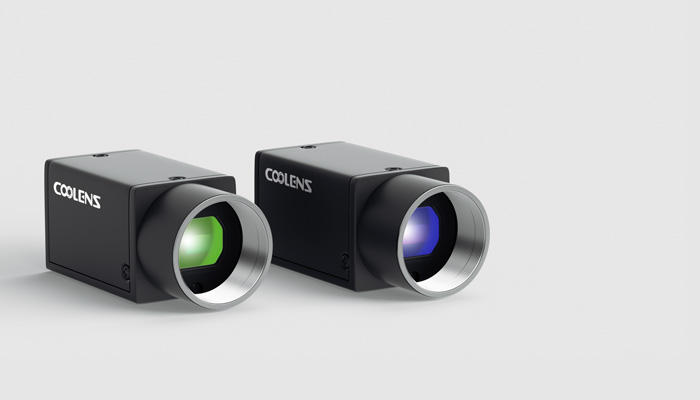As the core component of machine vision system, industrial camera is self-evident for its importance to machine vision system. According to different classifications, cameras are divided into many types:
1. Color camera, black and white camera:
The black and white camera directly converts the light intensity signal into the image gray value, and generates a gray image; the color camera can obtain the light signal of the red, green and blue components in the scene, and output the color image. Color cameras can provide more image information than black and white cameras. There are two main ways to implement color cameras, prism spectroscopy and Bayer filtering. The prism spectroscopic color camera uses optical lenses to separate the R, G, and B components of the incident light, converts the three colors of light signals into electrical signals on three sensors, and finally synthesizes the output digital signals to obtain a color image .
2. CCD camera, CMOS camera
The main difference between the chips lies in the way they convert light into electrical signals. For a CCD sensor, light is irradiated on the pixel, and the pixel generates electric charge. The electric charge is transmitted through a small number of output electrodes and converted into current, buffer, and signal output. For CMOS sensors, each pixel completes the conversion of charge to voltage by itself, and at the same time generates a digital signal.
3. Classified by target surface type: area scan camera, line scan camera
Cameras can be distinguished not only based on sensor technology, but also based on sensor architecture. There are two main sensor architectures: area scan and line scan. Area scan cameras are usually used in occasions where the output is directly displayed on the monitor. Line scan cameras are used for continuous moving object imaging or where continuous high-resolution imaging is required. A natural application of line scan cameras is to image continuous products in still images (Web Inspection), such as textiles, paper, glass, steel plates, etc. At the same time, line scan cameras are also suitable for non-still image detection in the electronics industry. Like the German Kappa camera, according to its CCD specifications, it can also be divided into line array and area array.
4. Classified by output mode: analog camera, digital camera
According to the different camera data output modes, it is divided into analog camera and digital camera. The analog camera outputs analog signal, and the digital camera outputs digital signal. Analog cameras and digital cameras can be further subdivided. For example, German Kappa cameras also include: USB 2.0 interface, EE 1394 a / Fire Wire, Camera Link interface, and Gigabit Ethernet interface. Analog cameras are divided into progressive scan and interlaced scan. Interlaced scan cameras also include EIA, NTSC, CCIR, PAL and other standard formats. For a detailed introduction to the interface technology, please refer to the acquisition card and acquisition technology section.
When choosing an industrial digital camera, the speed of object imaging must be fully considered. For example, assuming that the object does not move during exposure during the shooting process, a relatively simple and inexpensive industrial camera can be used; for stationary or slowly moving objects, an area scan industrial camera is most suitable for imaging stationary or slow moving objects. Because the entire area must be exposed at one time, any movement during the exposure time will cause the image to be blurred. However, motion blur can be controlled by reducing the exposure time or using a flash; for fast-moving objects, when using a moving object When using an area scan industrial camera, you need to consider the number of moving objects in the industrial camera during the exposure time, and you also need to consider the smallest feature that can be represented by a pixel on the object, that is, the object resolution. The rule of thumb when collecting images of moving objects That is, the exposure must occur within the time when the movement of the collected object is less than one pixel. If the object you are collecting is moving at a constant speed of 1 cm/sec, and the object resolution has been set to 1 pixel/mm, then the maximum exposure time required is 1/10 per second. Because the object moves a distance exactly equal to one pixel in the camera sensor, there will be a certain amount of blur when using the maximum exposure time. In this case, it is generally inclined to set the exposure time faster than the maximum value, such as 1/20 per second, to keep the object moving within half a pixel. If the same object moves at a speed of 1 cm/sec and the object resolution is 1 pixel/micron, then the maximum exposure required in one second is 1/10000. The speed of the exposure setting depends on the camera used, and Can you give the object enough light to get a good image?




